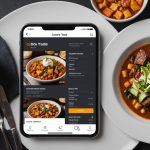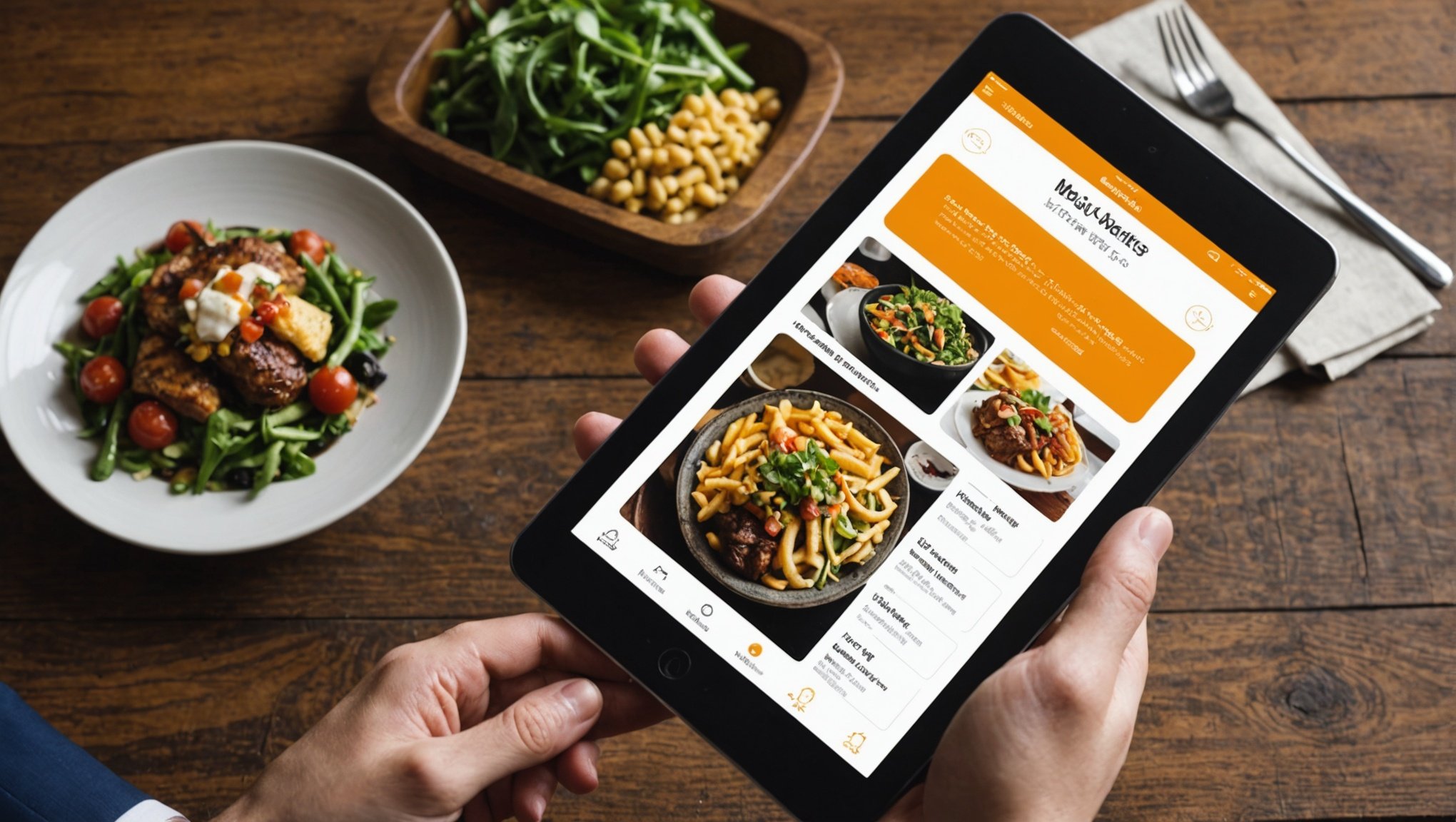Data-driven menu pricing is transforming the profitability landscape for UK restaurants. By leveraging analytics and customer insights, establishments can develop strategies that not only appeal to diners but also enhance profit margins. This approach goes beyond traditional pricing methods, incorporating psychological elements and market trends. Discover how embracing data can unlock potential profits, elevate customer experiences, and ultimately establish a competitive edge in the bustling restaurant industry. Your menu holds the key—are you ready to unlock its full potential?
Understanding Data-Driven Menu Pricing Strategies
In today's competitive restaurant industry, leveraging data-driven pricing is essential for optimizing menus and enhancing profitability. By analysing customer data, restaurants can identify trends and preferences, allowing for strategic adjustments in pricing. This approach not only maximizes revenue but also aligns with customer expectations.
Also to discover : Maximizing Precision Farming: Innovative Drone Applications for UK Agricultural Enterprises
Menu optimization is a crucial component of this strategy. Through careful analysis, restaurants can determine which items are popular and which are not, enabling them to adjust prices accordingly. This ensures that pricing reflects the perceived value of the dishes, leading to increased customer satisfaction and loyalty.
Common pricing strategies in the industry include cost-plus pricing, competitive pricing, and value-based pricing. Each strategy has its advantages and can be tailored to fit the specific needs of a restaurant. For instance, value-based pricing focuses on the customer's perceived value of a dish, allowing for premium pricing on popular items.
Understanding the relationship between pricing and customer behaviour is vital. When prices are set too high, it may deter customers, while prices set too low can undervalue the offerings. By using data to inform pricing decisions, restaurants can strike a balance that encourages spending while maintaining profitability.
Real-World Examples of UK Restaurants Implementing Data-Driven Pricing
Exploring case studies from UK restaurants reveals how data-driven pricing strategies can transform business outcomes. These examples highlight successful approaches and the insights gained from industry leaders.
Case Study 1: Restaurant A
Restaurant A, a bustling London bistro, embraced data analytics to refine their pricing strategy. By analysing customer purchase patterns and feedback, they identified high-demand dishes and adjusted prices to match perceived value. This approach led to a 15% increase in revenue within six months, showcasing the power of data in driving profitability.
Case Study 2: Restaurant B
In contrast, Restaurant B, a family-run establishment in Manchester, focused on competitive pricing. By comparing their menu prices with nearby competitors and incorporating customer sentiment data, they managed to attract a broader clientele. This strategy not only increased foot traffic but also enhanced customer loyalty, proving the effectiveness of tailored pricing strategies.
Lessons Learned from Industry Leaders
Key metrics such as customer preferences, sales volume, and competitor pricing were pivotal in informing decisions. The outcomes achieved through these data-driven strategies include improved customer satisfaction and sustained revenue growth. These case studies underline the importance of leveraging data for pricing, offering valuable insights for other UK restaurants aiming to optimise their menus.
Tools and Technologies for Data Analysis in Menu Pricing
In the evolving landscape of the restaurant industry, leveraging Data Analysis Tools is crucial for crafting effective pricing strategies. A variety of Restaurant Analytics platforms are available, each designed to cater to different needs. Popular tools like Tableau, Looker, and Power BI provide comprehensive insights into customer behaviour and sales trends, enabling informed decision-making.
Choosing the right tools depends on the specific requirements of your establishment. For smaller restaurants, simpler Pricing Software like WISK or MarketMan might suffice, offering user-friendly interfaces and cost-effective solutions. Larger chains might benefit from more robust systems like Oracle Hospitality or SAP, which offer extensive data integration and analytics capabilities.
The benefits of using technology to streamline pricing strategies are manifold. Firstly, it allows for real-time data collection and analysis, ensuring that pricing decisions are based on the latest market trends. Secondly, these tools can automate complex calculations, reducing human error and saving time. Lastly, they offer predictive analytics, helping restaurants anticipate customer preferences and adjust pricing dynamically.
By integrating these technologies, restaurants can enhance their pricing strategies, ultimately leading to increased profitability and customer satisfaction. Embracing these tools is a step towards a more data-driven and efficient approach to menu pricing.
Tips for Implementing Data-Driven Pricing Strategies
Successfully implementing data-driven pricing strategies requires a structured approach. Start by gathering and analysing relevant data. This involves collecting information on sales patterns, customer preferences, and competitor pricing. Utilising tools like Restaurant Analytics platforms can streamline this process, providing valuable insights.
Once data is gathered, the next step is to integrate these pricing strategies into daily operations. This means regularly updating menu prices based on the latest data insights. Automation tools can help maintain real-time pricing adjustments, ensuring that strategies remain aligned with market trends and customer expectations.
Engaging staff in the pricing strategy process is crucial. Staff should be trained to understand the importance of data-driven decisions and how these affect daily operations. Encourage open communication, allowing employees to provide feedback and share observations from customer interactions. This collaborative approach not only enhances the effectiveness of pricing strategies but also fosters a sense of ownership among team members.
By following these implementation tips, restaurants can create a dynamic pricing environment that responds to customer needs and market changes, ultimately leading to improved profitability and customer satisfaction.
Challenges in Data-Driven Pricing and Solutions
Implementing data-driven pricing in restaurants presents several challenges. One common issue is the accuracy of data. Inaccurate or incomplete data can lead to misguided pricing decisions, affecting profitability and customer satisfaction. To address this, it's crucial to establish reliable data collection methods and regularly audit data sources to ensure accuracy.
Another challenge is the integration of data into existing systems. Many restaurants struggle to seamlessly incorporate new data insights into their current operations. A potential solution is to invest in compatible data-driven solutions that easily integrate with existing platforms, allowing for smooth transitions and minimal disruptions.
A significant pitfall in data-driven pricing is the over-reliance on historical data. While past data provides valuable insights, it may not always predict future trends. Continuous monitoring and adjustment are essential to adapt to changing market conditions. Regularly updating data inputs and revising pricing strategies ensures that they remain relevant and effective.
Finally, the cost of technology can be a barrier. Investing in advanced analytics tools requires financial resources, which may be challenging for smaller establishments. Exploring scalable solutions and phased implementation can help manage costs while still benefiting from data-driven insights.
Visualizing Data for Effective Pricing Decisions
Understanding data is crucial for crafting effective pricing strategies, and Data Visualization plays a pivotal role in this process. By transforming complex datasets into intuitive visual aids, restaurants can gain valuable Pricing Insights that inform decision-making.
Charts and Graphs are indispensable tools in this context. They simplify the interpretation of data, allowing stakeholders to quickly identify trends and patterns. For instance, a line graph can illustrate sales trends over time, while bar charts can compare the popularity of different menu items. These visualizations make it easier to spot opportunities for price adjustments or identify underperforming dishes.
Several types of visualizations can enhance pricing strategies. Heat maps, for example, can show the frequency of sales for specific items, highlighting customer favourites. Pie charts can break down revenue contributions from various menu categories, guiding strategic pricing decisions.
Effective data visualization in restaurant pricing is demonstrated by establishments that use dashboards to display real-time data. These dashboards provide a holistic view of sales performance, enabling dynamic pricing adjustments. By leveraging these visual tools, restaurants can better align their pricing strategies with customer preferences and market trends, ultimately enhancing profitability.
Expert Insights and Future Trends in Menu Pricing
In the dynamic landscape of restaurant pricing, expert opinions provide invaluable guidance. Industry leaders emphasize the importance of adapting to evolving consumer behaviors. As customer preferences shift, data-driven strategies must also evolve to maintain relevance and profitability.
Future pricing trends indicate a growing reliance on technology. Restaurants are increasingly using artificial intelligence and machine learning to predict customer preferences and adjust prices dynamically. This trend reflects a move towards more personalized pricing models, where prices might vary based on individual customer data and real-time market conditions.
Industry insights suggest that transparency in pricing is becoming crucial. Consumers are more informed and expect clarity and fairness in how prices are set. Restaurants that communicate the value behind their pricing decisions are likely to build stronger customer loyalty.
Consumer behavior continues to play a pivotal role in shaping pricing strategies. As customers become more health-conscious and environmentally aware, restaurants are adjusting their offerings and prices to align with these values. This shift is expected to influence menu pricing, with potential premium pricing for sustainable and health-focused menu items.
By staying attuned to these insights and trends, restaurants can craft pricing strategies that resonate with modern consumers.











